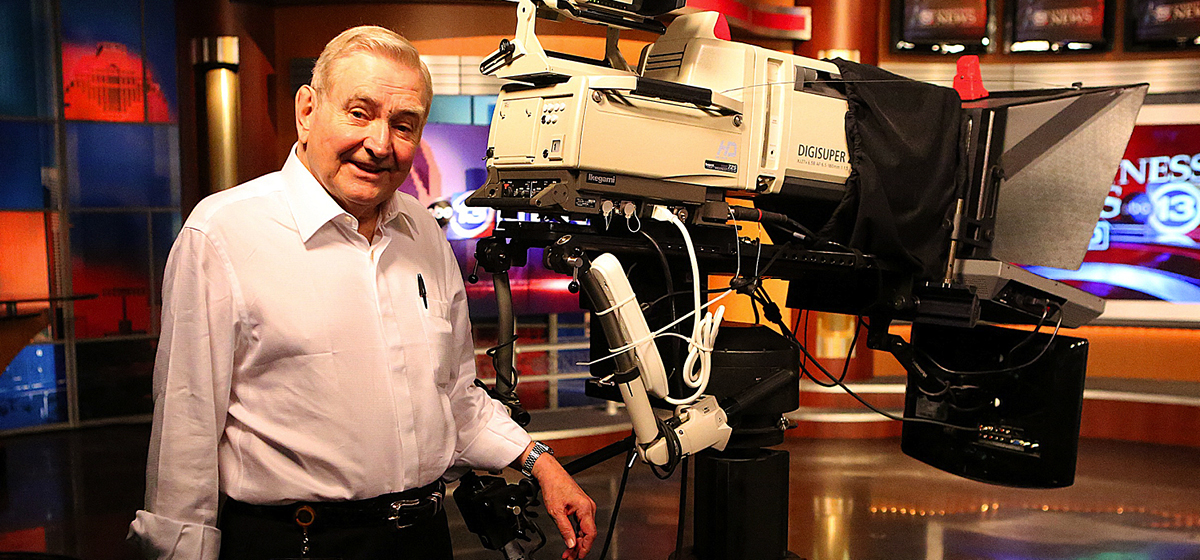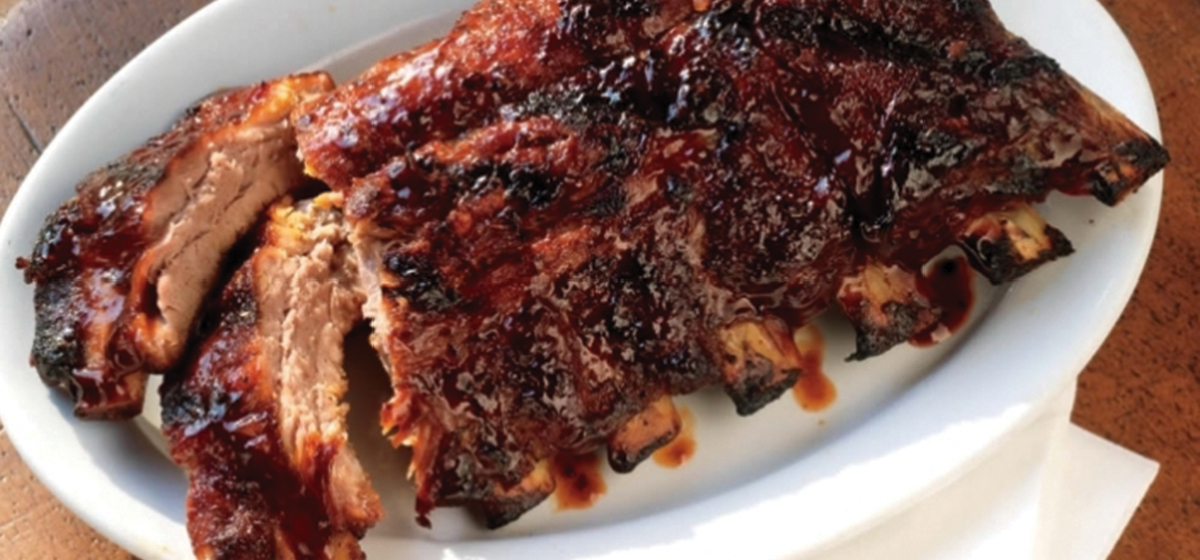Calico Dairy, nestled on a 40-acre enclave off League Line Road, is the crowning achievement of Herman and Kathleen Hoffman, who have lived on the acreage for two decades. The only licensed dairy in Montgomery County, Calico Dairy is unique for another reason—it is the only dairy in a radius of about 100 miles that produces and sells raw milk.
A decade ago, the Hoffmans began breeding the superior dairy cows needed for a raw milk dairy. They opened Calico Dairy in August 2012 and proudly serve the many proponents of raw milk who live in the local area and far beyond. (Pasteurization, Herman says, is a throwback to the days when proper sanitation techniques were not widely understood, and when few families had adequate refrigeration. By processing milk at high temperatures, bacteria and other pathogens were eliminated, allowing milk to have a longer shelf life. Unfortunately, “good” bacteria, probiotics, vitamins and minerals may also be compromised during the process.) Devotees of raw milk say it’s a healthy, natural, whole food.
“Milk is the perfect food,” Kathleen says. “It has been for thousands and thousands of years.”
The Postcards team arrives at the dairy in the pre-dawn darkness. Although subdivisions surround Calico Dairy, the acreage is surreally quiet. Cows rest peacefully. We make our way toward the soft light that is emanating from the barn.
6:55 a.m. – Kathleen tells us that Calico Dairy has 21 cows, as well as two bulls for breeding. The name of the dairy was inspired by the patchwork of breeds in use. Some are Holsteins, which provide a large volume of milk; some are Jerseys, which are heat tolerant and provide milk with high cream content; others are Ayrshire, which are noted for the flavor of their milk. The dairy also has some cross-bred cows.
7:00 a.m. – Kathleen introduces us to Fudgie, Cocoa and Caramel, month-old Nubian goat triplets, which are friendly and playful. Their mother is milked twice daily. Calico Dairy keeps milk-producing does away from bucks, which minimizes the strong flavor often associated with goat’s milk. Goat’s milk, Kathleen says, is popular among breastfeeding mothers because it is so similar to human milk. She said some mothers, especially working mothers, supplement breast milk with half goat’s milk for their babies’ bottles.
7:15 a.m. – It is time to prepare the cows for milking. This process, Kathleen says, takes longer to prepare the cows than it takes for the actual milking, Kathleen says. Udders are shampooed and rinsed, then dried with sanitized towels.
7:30 a.m. – The first cows begin arriving in the parlor for milking. Cows seem to agree among themselves which ones will be milked first, Herman says, and cows often go to the same milking station for each milking. Four cows are in the parlor at a time. Each cow has a name; Lauren is the first to be hooked up to one of two electric milking machines.
7:35 a.m. – Georgette, an Ayrshire cow, nibbles on feed while she is being milked. “We’re trading,” Kathleen says with a smile.
7:40 a.m. – Lauren leaves the parlor, and her milk is poured from a stainless steel milk can through a filter into a five-gallon milk pail.
7:45 a.m. – When Georgette’s milking is completed, Kathleen dips each of her four “faucets,” as she calls them, into a medicated dip that closes the sphincter muscles and inhibits the infiltration of bacteria. Meanwhile, as one cow leaves the parlor, another enters and is prepped for milking.
7:50 a.m. – Kat enters the barn and is prepped for milking. Kathleen observes that Kat’s tight, well-veined udder makes Kat a show-quality heifer. In the adjacent milking area, Akina, whose calf is older than Kat’s, has a droopier udder. All the cows, however, look droopier when they leave the parlor. As a cow is prepared for milking, she experiences a “letdown” and the milk is easily extracted.
7:55 a.m. – The parlor has become wet and slightly muddy, so it is swept out—a process that will be repeated several times throughout the morning. Calico Dairy, Kathleen says, is kept scrupulously clean. Cows are given no antibiotics unless they develop infections; when they are given antibiotics, they’re kept off the milk line for one week. Medication and withholding periods are monitored by Calico Dairy’s veterinarian. Kathleen notes that all the cows at Calico Dairy are well fed and treated with gentleness. ““They’re treated like a bunch of queens,” she says.
8:00 a.m. – Kat’s milking is complete. Partly because her calf is only about a month old, she has produced a whopping amount of milk—between five and six gallons. The amount of milk a cow produces, Kathleen says, is dependent upon five variables: nutrition, breed, length of time since gestation, the size of the cow, and the season. (Cows typically produce less milk when the weather is hot). Cows typically produce slightly less milk at their evening milking than at the morning milking, Kathleen says.
8:05 a.m. – Two more cows, Minnette and Midge, leave the parlor. Kathleen says she appreciates electric milking machines. On Christmas Day of 2012, power was out at the dairy, and she had to milk all the cows by hand for four days. She is a fast milker, but it still took her two hours at each milking.
8:15 a.m. – As milk pails are filled, they are poured into a refrigerated bulk tank. “I was told by my milk inspector that we are the only raw dairy in the state of Texas that has a bulk tank,” Kathleen says. The bulk tank, although it looks new, was manufactured in 1940 and must have been at the height of technology at the time of its manufacture, she says. The bulk tank agitates the milk so it is kept uniformly at the perfect temperature. Kathleen explains that, if raw milk is quickly refrigerated to 38 degrees and kept refrigerated, it will stay fresh for seven to ten days; some customers boast that Calico Dairy milk has stayed fresh for two and even three weeks. Kathleen advises customers—some who drive for many miles to purchase raw milk from the dairy—to bring coolers with them for transporting milk home.
8:20 a.m. – Kathleen notes that Calico Dairy uses genetically-superior breeding stock to produce dairy cows. She insists that cows need exercise, and allows them time to walk and forage. “They’re happy, content cows,” she says, and proper treatment of cows increases both the quality and quantity of the milk they produce.
8:30 a.m. – Kathleen explains that, according to Texas law, raw milk must be sold at the point of origin, and Calico Dairy operates a storefront which is open from 8 a.m. until 6 p.m. on Mondays through Saturdays and from noon until 5 p.m. on Sundays. The dairy does not charge for tours, but Herman and Kathleen encourage parents to bring their children to the dairy on weekends. They can interact with the cows, see how milk is produced, buy natural foods, and still spend less than they would for many entertainment venues. (In addition to raw whole milk, Calico Dairy sells organic-fed eggs, grass-finished beef, “fudgie milk,” strawberry milk, kefir, and hand-made cheese.) “People can see where their food comes from and understand the process we are doing,” Kathleen says.
8:35 a.m. – Herman says the dairy must abide by many strict rules to be a licensed producer of raw milk in the state of Texas, but Kathleen is proud of her stack of inspection reports which all say “no violations.” She is perhaps even prouder of a certificate showing the flawless quality of the milk at Calico Dairy.
8:40 a.m. – The milking has been completed; “dry cows” not currently producing milk are brought into the parlor to be fed.
8:45 a.m. – Paul Martella arrives with a large container full of cheese. Paul, a marine engineer, learned to make cheese at the award-winning Eagle Mountain Creamery in Granbury from well-known cheesemakers Linda and Larry Failace of Vermont. During the past year, he partnered with Calico Dairy and now makes gouda (both traditional and with caraway seeds) and queso fresco (which has a crumbly texture) on the weekends. He offers slices of velvety-smooth gouda to the Postcards team, and it earns two thumbs up.
9:00 a.m. – Herman, a graduate of Purdue University, tells a little about his philosophy of the breeding and raising of dairy cows, which has earned him consulting jobs at other farms and dairies. “Everything we do here is for the animals and for the quality of the product,” he says.
9:10 a.m. – Dairy employees are busy bottle feeding calves, giving grain and hay to the adult cows, and cleaning the milking equipment with lots of hot water and soap. Meanwhile, several of the cows are drinking at troughs.
9:20 a.m. – While Kathleen mans the store, 34 round bales of hay are delivered, as they are once each week.
9:50 a.m. – Kathleen begins the two-hour process of making kefir, a fermented milk product. Cancer patients, she says, often buy kefir to improve the milieu of their stomachs after they have been ravaged by cancer treatments. Later in the morning, she will inspect troughs. They are automatically filled using a flotation system, Kathleen says, but must be inspected daily to ensure the floats are functioning correctly. Kathleen will also check the supply of hay and salt for all the livestock. In addition to cows and goats, the Hoffmans have about 125 horses. At about 5 p.m., the milking process will begin again. It will be finished at approximately 8 p.m.
Both Herman and Kathleen have been working with livestock for their entire lives, but Herman says they’ve never worked harder since opening Calico Dairy. The couple works at the dairy 365 days a year.
“Cows are like machines,” Kathleen says, “but they don’t ever close down. It requires a lot of patience and dedication.”



